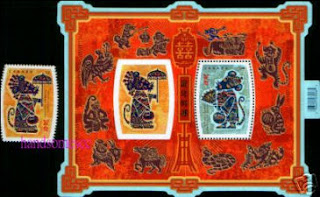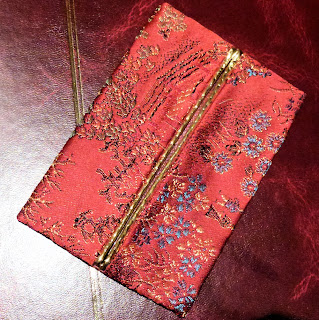As at all traditional Chinese gatherings, food plays an important role in the Chinese New Year Festival. Dinners tend to be very elaborate involving tables laden with auspicious foods.
On New Year's Eve, families have a reunion feast which includes nian gao, a sticky rice pudding cake which is said to make people "advance toward higher positions and prosperity step by step." A New Year's Eve tradition from Northern China, dumplings (jiao zi), look like the golden ingots yuan bao used during the Ming Dynasty for money and the name sound like the word for the earliest paper money, so serving them brings the promise of wealth and prosperity!
On New Year's Eve, families have a reunion feast which includes nian gao, a sticky rice pudding cake which is said to make people "advance toward higher positions and prosperity step by step." A New Year's Eve tradition from Northern China, dumplings (jiao zi), look like the golden ingots yuan bao used during the Ming Dynasty for money and the name sound like the word for the earliest paper money, so serving them brings the promise of wealth and prosperity!
Many families eat these at midnight so they have money at the changing of the years. Some cooks will hide a clean coin in one for the most lucky to find. Long noodles are used to guarantee that all at the table will have a long life.
It is typical for a Chinese family to make eight to nine dishes for the New Year's Eve dinner. The reason for this is because in the Chinese dialect of Cantonese the word for eight is baat, which rhymes with faat, the word for prosperity, says Young. The Chinese word for "nine" means "long-lasting."
• A whole chicken, including head and feet (It symbolizes a proper beginning and end to the year.)
• Clams or scallops (Their shape is similar to ancient Chinese coins.)
• Any dish featuring lettuce (The word for lettuce, saang choy, sounds like the word for "growing good fortunes.")
• Lobster (It represents life and energy.)
• Rice (It symbolizes well-being and good fortune.)
• Spring rolls (Their shape is reminiscent of ancient Chinese money, which would represent wealth for the coming year.)
• Dumplings (Also shaped like ancient Chinese coins. Some families choose to cook dumplings late at night, through the midnight hour to symbolize bringing prosperity and luck into the new year. )
• Fish with its head and tail intact ('Fish' in Chinese is yu, which sounds like the word for wish. Also fish swim in pairs, so it represents marital bliss. The fish is served as the last course, and not all of it is eaten so there are leftovers to eat on New Year's Day. By doing this, families bring prosperity of the previous year into the new year.)
• A whole chicken, including head and feet (It symbolizes a proper beginning and end to the year.)
• Clams or scallops (Their shape is similar to ancient Chinese coins.)
• Any dish featuring lettuce (The word for lettuce, saang choy, sounds like the word for "growing good fortunes.")
• Lobster (It represents life and energy.)
• Rice (It symbolizes well-being and good fortune.)
• Spring rolls (Their shape is reminiscent of ancient Chinese money, which would represent wealth for the coming year.)
• Dumplings (Also shaped like ancient Chinese coins. Some families choose to cook dumplings late at night, through the midnight hour to symbolize bringing prosperity and luck into the new year. )
• Fish with its head and tail intact ('Fish' in Chinese is yu, which sounds like the word for wish. Also fish swim in pairs, so it represents marital bliss. The fish is served as the last course, and not all of it is eaten so there are leftovers to eat on New Year's Day. By doing this, families bring prosperity of the previous year into the new year.)



















